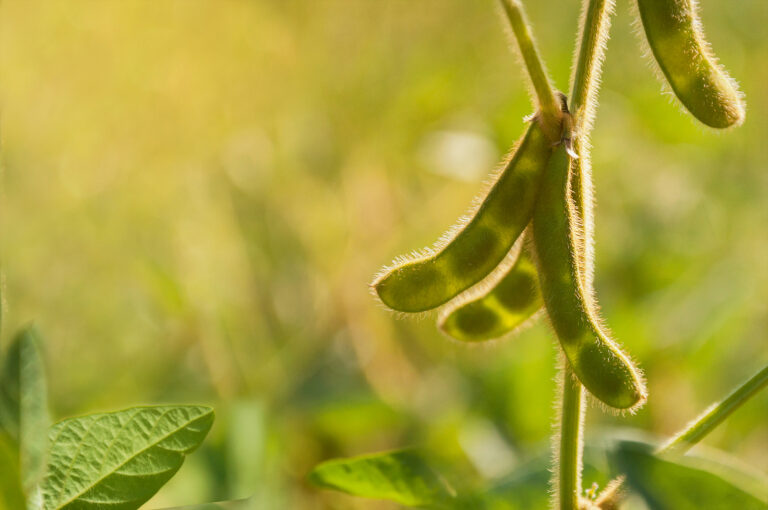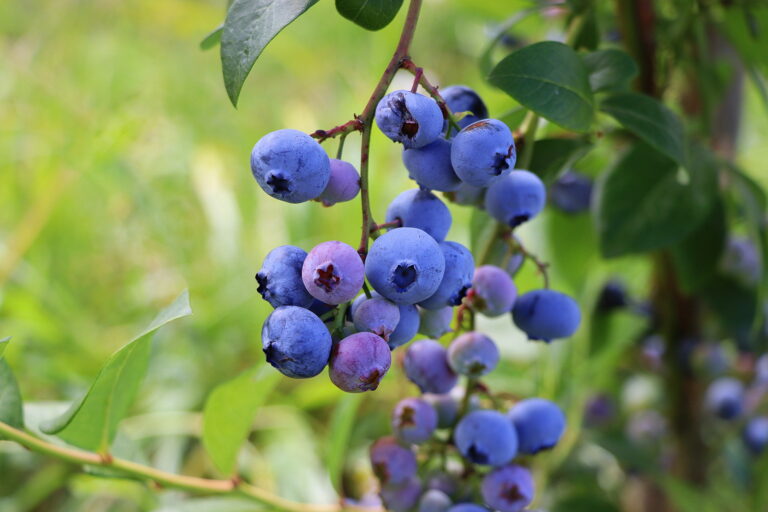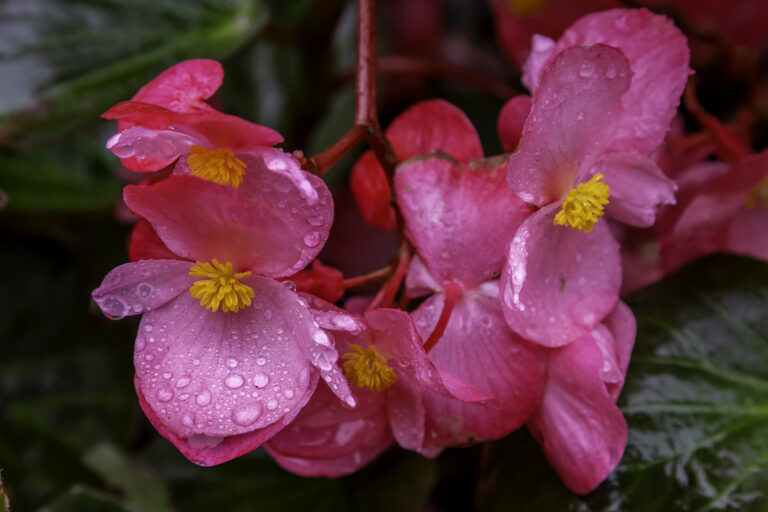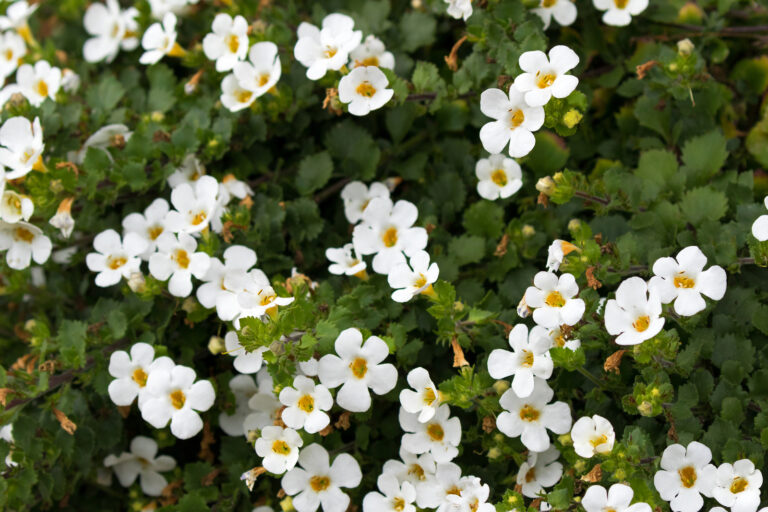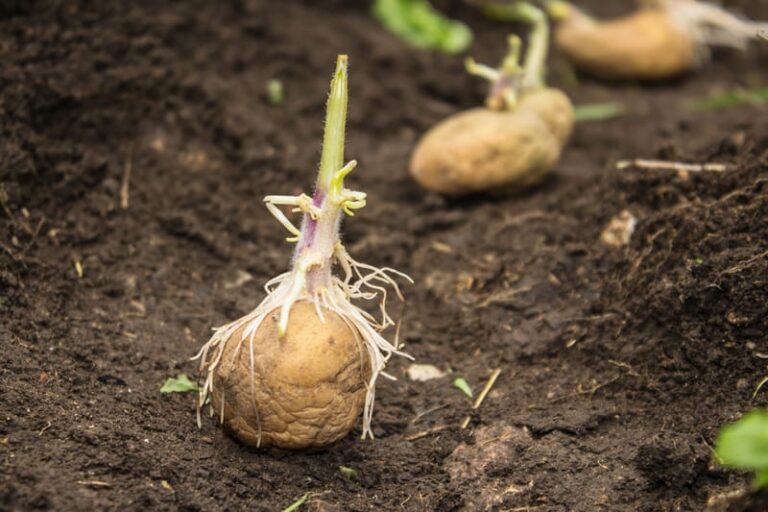How to Plant and Grow Loquats
Loquats are easy to grow. They produce plum-sized fruits that are sweet and tangy.
Loquats are large evergreen shrubs or small trees. They can grow 20 to 30 feet tall but are usually about 10 feet tall or slightly larger.
Loquat fruits are round, oval, or pear-shaped, 1 to 2 inches long with smooth, downy yellow or orange sometimes red-blushed skin. The flesh is white, yellow, or orange depending on the cultivar.
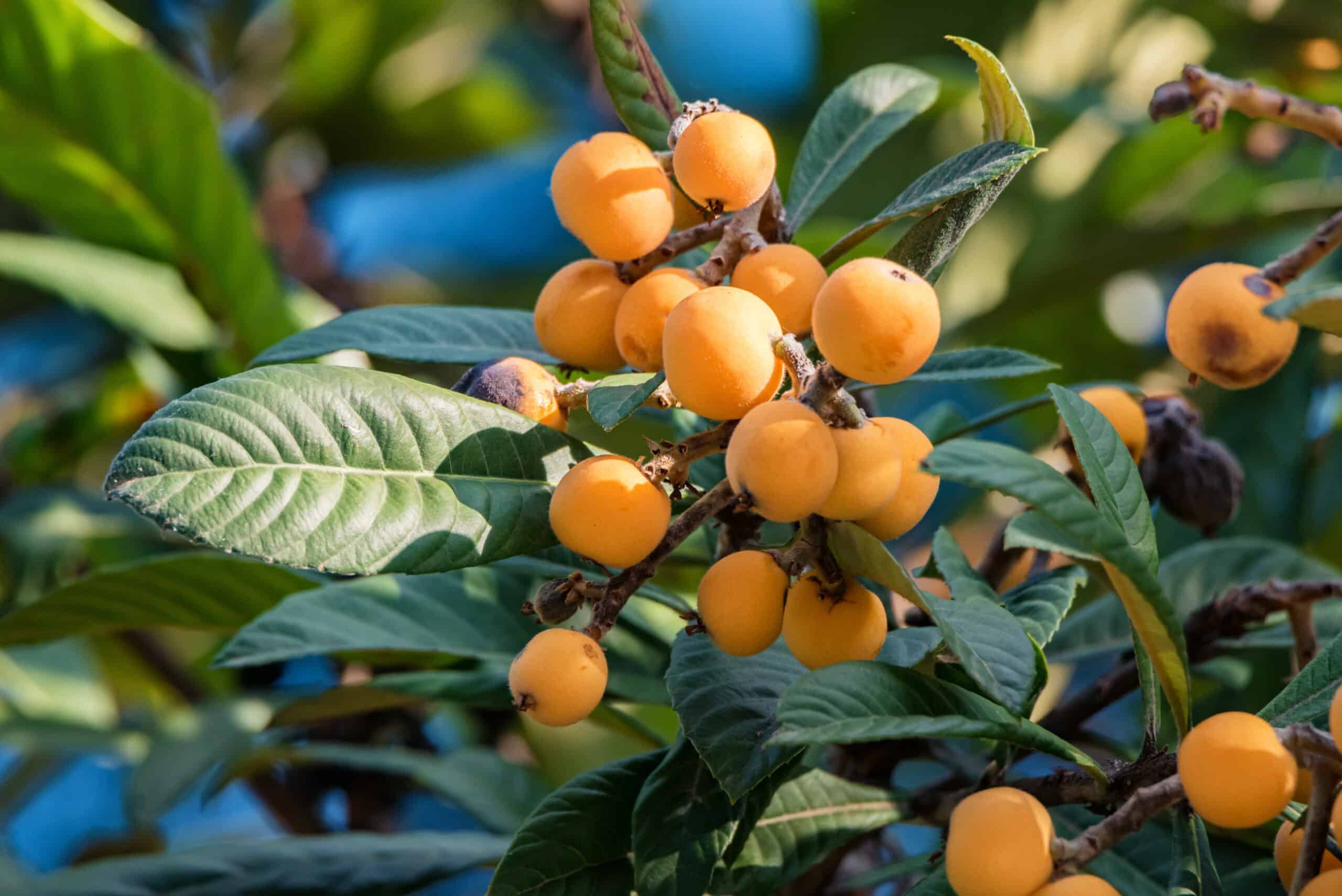
The fruit is thin-skinned and juicy. Fruit can be eaten fresh; the skin is usually peeled first. Fruits can be added to fruit salads or fruit cups. They can be cut in half and dried. Loquats can also be cooked and preserved.
Loquats are also called Japanese medlar and Japanese plum.
Loquats botanical name is Eriobotrya japonica.
Here is your complete guide to growing loquats.
Best climate and site for growing loquats
- Loquats grow in Zones 8 to 10. They are adapted to subtropical and mild-winter regions. Loquats grow well where citrus grows. Orange flesh varieties need more warmth to produce sweet fruit.
- Where the climate is too cool or too hot and humid, loquats will not bear fruit.
- Mature trees can withstand a low temperature of 12° Flowers will be killed at 26°F.
- Hot and dry summer weather can cause leaf scorch. White-fleshed loquats are best grown in cool coastal areas.
- Plant loquats in full sun; they will grow in partial shade but fruit may not fully ripen.
- Plant loquats in compost-rich loamy soil that is well-drained. Loquats will grow in sandy loam and heavy clay, but well-drained soil is important. Loquats will not grow well in alkaline soil.
- Loquats can be messy if planted near a patio or walkway.
Spacing loquats
- Loquats can grow 15 to 30 feet high. At 10 years, a loquat will be 12 to 15 feet tall and wide.
- Space standard trees 15 or more feet apart.
- Dwarf trees grow to half the size of a standard or less and can be spaced 8 to 10 feet apart.
Loquat pollination
- Some loquat tree varieties are self-pollinating; they have both male and female flower parts. But many are only partially self-pollinating; they may produce fruit but they are best paired with another tree for good fruit production.
- A self-pollinating tree will produce fruit on its own. A tree that is only partially self-fertile can produce fruit without being paired with another tree, but fruit production will be reduced.
- Plant two loquats near each other to ensure pollination and good fruit yield.
Planting loquats
- Plant container-grown or balled and burlapped trees in spring or early summer before hot, dry weather comes. In mild-winter regions, loquat trees can be planted in the fall.
- Prepare a planting site in full sun that is sheltered from a prevailing breeze or wind.
- Work well-rotted compost or manure into the soil.
- Dig a hole half again as deep and twice as wide as the tree’s roots. Add a cupful of bonemeal to the bottom of the hole before setting the plant in place.
- Put a tree stake in place before planting. Drive the stake into the ground to the side of the hole to be at least 2 feet deep.
- Set the plant in the hole so that the soil mark from the nursery pot on the stem is at the surface level or an inch or two deeper than the surrounding soil. Remove all twine and burlap from balled and burlapped trees. Spread the roots out in all directions.
- Re-fill the hole with half native soil and half aged compost or commercial organic planting mix; firm in the soil so that there are no air pockets among the roots. Water in the soil and create a modest soil basin around the trunk to hold water at watering time.
- Secure the tree to the stake with tree ties.
- After planting, water each tree thoroughly and fertilize it with a high-phosphorus liquid starter fertilizer.
Container growing loquats
- Loquats can be grown in containers. Choose a large container at least 24 inches wide and deep.
- Plant dwarf cultivars and repot annually to prevent plants from becoming root-bound.
- Loquat makes a good patio area tree, but avoid planting them where fruit can drop on patios or sidewalks.
Loquat care, feeding, and watering
- Loquats are shallow-rooted. Be careful not to disturb the roots when weeding. Mulch to protect the shallow roots.
- Loquats are drought-tolerant but they will produce best with regular, deep watering. Do not grow loquats where there is standing water or soil that is always wet.
- Keep the soil evenly moist. Be sure to water when blossoms are swelling. Also, be sure to water during harvest time.
- Fertilize loquats three times a year in winter, spring, and early summer with 6-6-6 organic fertilizers; avoid high nitrogen fertilizers which can reduce flowering. Do not fertilize trees after midsummer.
- If trees show signs of excessive growth, fertilizer just once each year in midwinter.
Pruning loquats
- Prune loquats after harvest. Prune back shoots to keep the tree from growing too tall.
- Prune out dead, diseased, crossing or rubbing branches.
- Remove dense shoots growth in the center of the plant; this will ensure that sunlight reaches ripening fruit.
- Loquats will not be harmed by severe pruning.
Thinning loquats
- If the fruit set is heavy remove about half of the immature fruits when they are ½ inch in diameter; this will improve the size and quality of the remaining fruit.
- You can thin by clipping off some clusters or individual fruitlets.
Propagating loquats
- Loquats can easily be grown from seed.
- Loquats are commonly propagated by budding or grafting.
- To produce dwarf trees, graft cultivars onto quince rootstock. Dwarf trees produce fruit early than standard trees.
Loquat problems and controls
- Loquats are resistant to most diseases and insect damage.
- Fire blight is a bacterial disease that blackens leaves and branches; if you see scorched-looking leaves or branches prune them off cutting into live wood and putting the prunings in the trash.
- Caribbean fruit flies can attack the fruit. Spray with Spinosad to prevent damage. Use sticky traps to trap flies.
- Birds will eat ripening fruit. Place bird netting over small trees. Place a cheesecloth bag around fruit clusters before the color.
Fall and winter loquat care
- Prune loquats after harvest.
- Mulch around plants with aged compost or aged manure in winter.

Harvesting and storing loquats
- Loquats begin bearing at 3 to 4 years of age.
- Loquats will be ready for harvest about 90 days after full flower opening.
- Allow fruits to ripen fully on the tree before harvesting. The fruit is ripe when it is fully colored and slightly soft. Fruit for preserving should be harvested before it is fully ripe.
- Use a pruner to clip individual fruits or clusters from the tree.
- Loquats will keep in the refrigerator for one to two weeks
- Eat loquats fresh or dried. Loquats can be used in fresh fruit salads or fruit cups. Use loquats to make jam, jelly, preserves, sauce, and chutney. Loquats can also be used to make wine.
Loquat varieties to grow
Orange-Fleshed Cultivars
- ‘Big Jim’: round to oblong fruit, 1½ inches in diameter; pale orange-yellow skin; easy to peel; orange-yellow flesh with very good flavor that is slightly tart; ripens mid-spring; the tree is upright.
- ‘Early Red’: medium-large, pear-shaped fruit in small clusters; orange-red skin with white dots; orange flesh is juicy and sweet; ripens in late winter.
- ‘Gold Nugget’: large, round to oblong fruit; yellow-orange thin skin; orange flesh is sweet, juicy, and firm; flavor similar to an apricot; the upright growing tree is self-fertile.
- ‘Mogi’: small, elliptical fruit; light-yellow skin; sweet flesh; ripen in early spring; the tree is sensitive to cold; the tree is self-fertile.
- ‘Mrs. Cooksey’: large fruit, about 1½ inches in diameter; yellow flesh; good flavor.
- ‘Strawberry’: strawberry-like flavor; medium-sized fruit with yellow flesh.
- ‘Tanaka’: 2 to 3-ounce large fruit; orange-yellow skin; rich orange flesh; sweet, excellent flavor; ripens in late spring; fruit keeps well on the tree.
- ‘Wolfe’: oval fruit; yellow, thick skin; firm, juicy flesh, excellent flavor; blooms during fall and early winter; ripens winter and early spring; excellent for cooking; tree to 25 feet tall.
White-Fleshed Cultivars
- ‘Advance’: medium to large, pear-shaped fruit; deep yellow skin; downy thick skin; whitish flesh, melting and very juicy, pleasant flavor; ripens late winter to early spring; tree is a natural dwarf to 5 feet tall; resistant to fire blight; needs pollinator; use ‘Gold Nugget’.
- ‘Benlehr’: medium-size oval to oblong fruit, 1½ inch long; thin skin, easy to peel; white flesh; juicy sweet flavor.
- ‘Champagne’: medium to large, oval fruit; deep yellow skin is thick and astringent; translucent white flesh; melting and very juicy; very good flavor; ripens late spring; the tree is self-infertile.
- ‘Herd’s Mammoth’: large fruit, slightly tapering at stem end; yellow-orange skin; white to cream-colored flesh; ripens early.
- ‘Victory’: large, oval fruit; yellow to orange skin; white to cream-colored flesh; juicy and sweet; ripens midseason.
- ‘Vista White’: small to medium-sized fruit; yellow skin; white flesh; very sweet; excellent for dessert.
Also of interest:
Related articles:
Planning the Home Fruit Garden
Garden Planning Books at Amazon:
- Vegetable Garden Almanac & Planner
- Kitchen Garden Grower’s Guide Vegetable Encyclopedia
- Vegetable Garden Grower’s Guide
- Tomato Grower’s Answer Book
More fruit-growing articles:
Learn how to plant, grow, prune, and harvest your favorite fruits. Click below for all you need to know.
- Apple
- Apricot
- Avocado
- Banana
- Blackberry
- Blueberry
- Cantaloupe
- Chayote
- Cherimoya
- Cherry
- Citrus
- Clementine
- Cranberry
- Currants
- Elderberry
- Feijoa
- Fig
- Gooseberry
- Grape
- Grapefruit
- Guava
- Kiwifruit
- Kumquat
- Lemon
- Lime
- Loquat
- Mandarin
- Mango
- Melon
- Mulberry
- Muskmelon
- Nectarine
- Olive
- Orange
- Papaya
- Passion Fruit
- Peach
- Pear
- Persimmon
- Pineapple
- Pineapple Guava
- Plantain
- Plum
- Pomegranate
- Pumpkin
- Quince
- Raspberry
- Strawberry
- Tangelo
- Tangerine
- Tangor
- Watermelon

